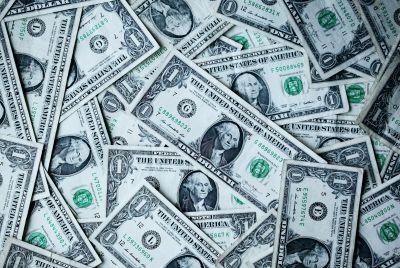Trump's Secret Student Loan Forgiveness Bombshell: Millions to See Debt Wiped — But What's the Catch?
Borrowers warned of possible tax bills when relief becomes official

It sounded too good to be true.
Across America, inboxes pinged this month with unexpected emails from the Trump administration announcing that long-time student-loan borrowers could finally see their debts erased.
The Department of Education confirmed that millions enrolled in income-based repayment plans will soon have their balances wiped clean. The first wave of loan discharges, officials said, could appear within weeks.
But as celebrations erupted online, experts were quick to ask the question on every borrower's mind: what's the catch?
Relief With Strings Attached
The forgiveness drive follows a White House overhaul of the Income-Based Repayment (IBR) programme, which limits monthly payments to a small slice of a borrower's income for 20 or 25 years before any remaining balance is cancelled.
The changes expand eligibility to roughly two million borrowers and remove the need to prove financial hardship. Some parent PLUS loan holders, who took out loans for their children, can now qualify too.
For many, it could mean freedom after decades of payments. Yet hidden in the fine print is a clause that could turn relief into a tax headache.
The Tax Trap Waiting in 2026
Under the American Rescue Plan of 2021, student-loan forgiveness is tax-free only until 31 December 2025. Any debt cancelled after that date may count as taxable income, potentially saddling borrowers with bills running into thousands of dollars (around £8,000–£10,000).
Financial analysts warn that those whose discharges are processed in 2026 or later could face unpleasant surprises at tax time. To prevent that, the Education Department says the crucial date is when a borrower becomes eligible, not when paperwork is completed.
Borrowers who reach the 20- or 25-year mark before the deadline should still qualify for tax-free relief, even if bureaucratic delays push their files into the new year.
Bureaucratic Backlog and Shutdown Chaos
Adding to the uncertainty is the ongoing government shutdown, now in its third week. Thousands of Education Department employees are furloughed, leaving borrowers struggling with unanswered calls and frozen online systems.
Officials have urged borrowers to keep making regular payments until they receive written confirmation that their discharge has gone through. Discharge data will be sent to loan servicers after 21 October, though processing could stretch into November as staff work through the backlog.
What Borrowers Should Do
Financial advisers are warning borrowers not to sit back just yet. They should check their payment histories, confirm that their repayment plans are listed correctly, and ensure any earlier payments have been counted.
Those who received the government's email should monitor their loan-servicer accounts for updates. Borrowers who think they qualify but have not been contacted should verify their status through the Federal Student Aid website once normal operations resume.
Politics or Policy?
The timing has stirred debate in Washington. Critics argue that launching a massive forgiveness push during a shutdown is political theatre aimed at boosting the president's popularity. Supporters insist it shows the administration's commitment to easing America's $1.6 trillion (£1.3 trillion) student-debt crisis.
Whatever the motive, the catch remains: relief may come with tax bills, red tape, and weeks of waiting.
As one education analyst told NBC News: 'If it holds, this could be the biggest act of debt relief in Trump's presidency. But the fine print could make all the difference.'
For millions of borrowers, the dream of debt freedom is finally within reach — provided they can navigate the pitfalls hiding beneath the promise.
© Copyright IBTimes 2025. All rights reserved.




















